This is the first in a series of posts on the Nikon Z50. You should be able to find all the posts about that camera in the Category List on the right sidebar, below the Articles widget. There’s a drop-down menu there that you can use to get to all the posts in this series; just look for “Z50”.
I don’t normally test APS-C cameras anymore, having sworn off the Sony ones because I found their user interface frustrating when switching from an a7x or a9x. But I was intrigued with Nikon’s diminutive — and cheap — Z50, so I bought one with the kit zoom. I picked it up today, and did some dark field (body cap in place) image-making and analysis.
There appears to be no electronic shutter. I used ECCS. There also aren’t the usual Nikon file format choices. I picked 14-bit, which appears to be compressed. I’m counting on the form of that compression being lossless. I used 1/1000 second for an ISO series. Here’s the engineering dynamic range (EDR) for each of the raw channels:
I’m defining EDR as full scale over read noise. This is quite credible.There appears to be a conversion gain change at the transition from ISO 320 to ISO 400. There also seems to be digital noise suppression above ISO 10000.
In modern cameras with on-sensor phase-detection autofocus (OSPDAF, or must PDAF if it’s understood you’re talking about MILCs), the spectra of the read noise has been interesting. Here are spectra for all four raw channels at ISO 100:
Plane 1 is the red channel. It looks perfect. fs is the sampling frequency of the channel. f = fs/2 is the Nyquist frequency for the channel. The sampling frequency of the whole sensor is twice the sampling frequency for any of the raw channels.
So does the first green channel.
So does the second green channel.
But the blue channel has the periodic spikes that we’ve come to know, if not love.
The spikes get smaller as the ISO rises and the read noise overwhelms them. By ISO 1000 they are almsot gone and only the lowpass effect of the PDAF interpolation remains:
At ISO 12800, a very slight lowpass effect creeps in on the other raw channels:
Even at ISO 51200, it’s not bad at all:
I wish the Sony a9II spectra looked this clean.
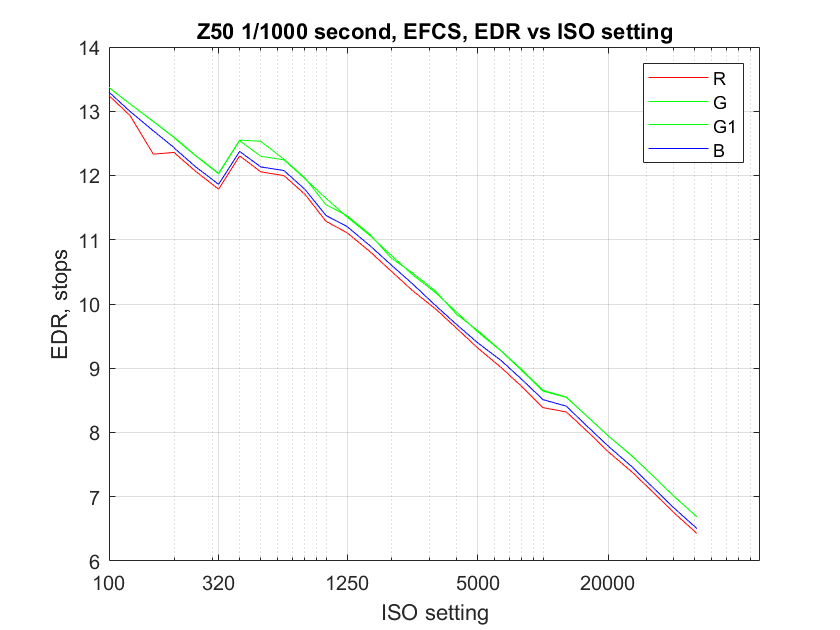
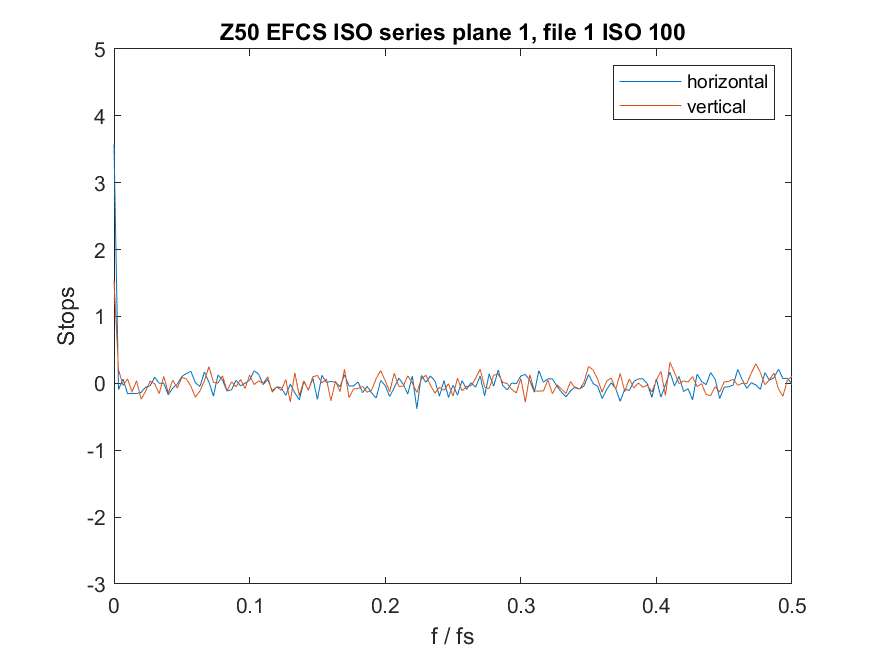
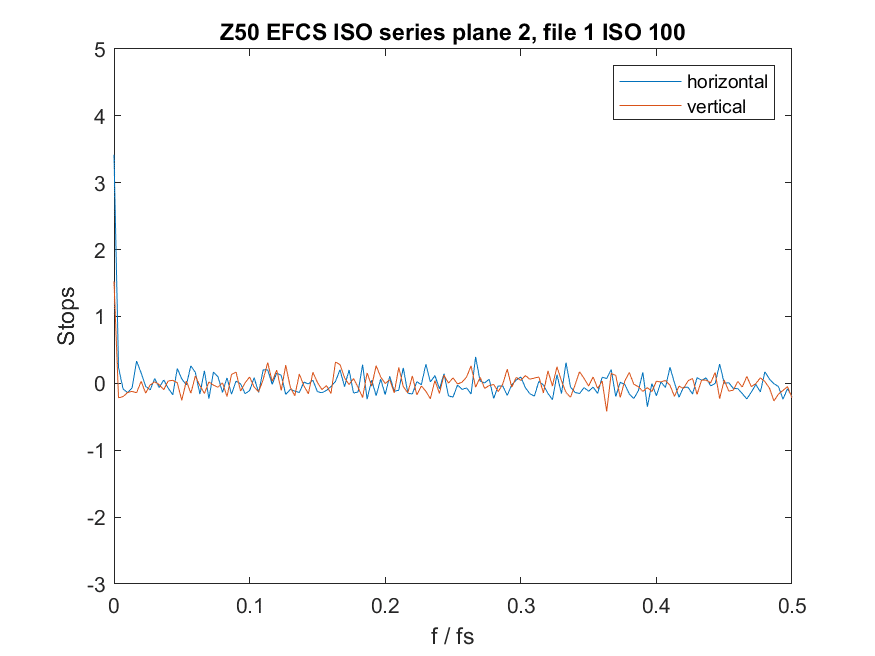
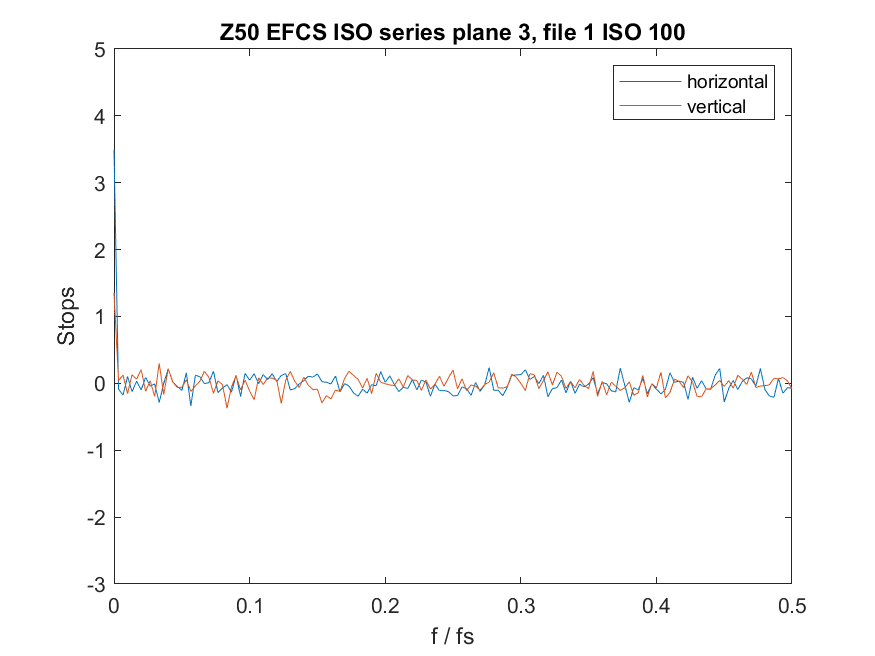
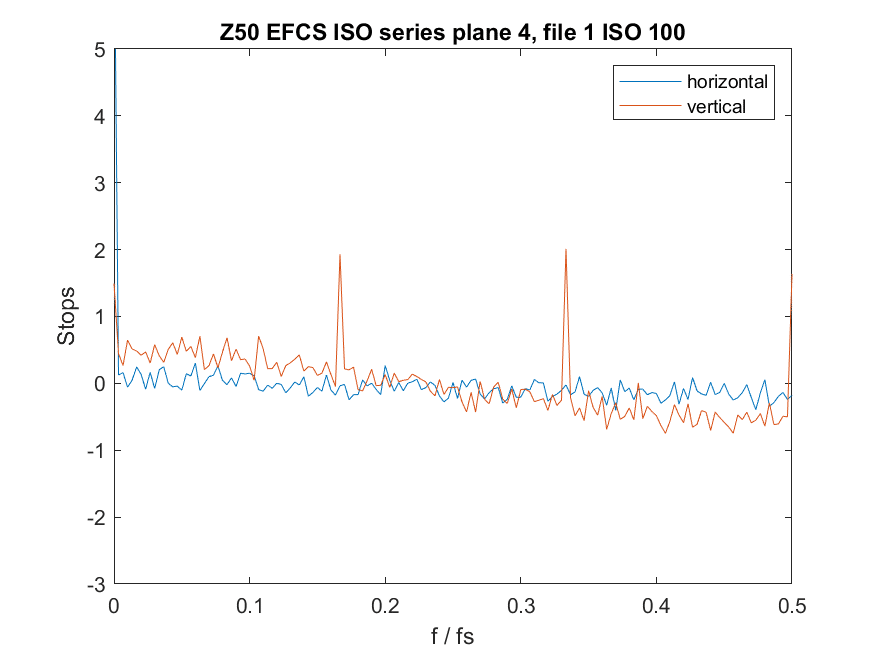
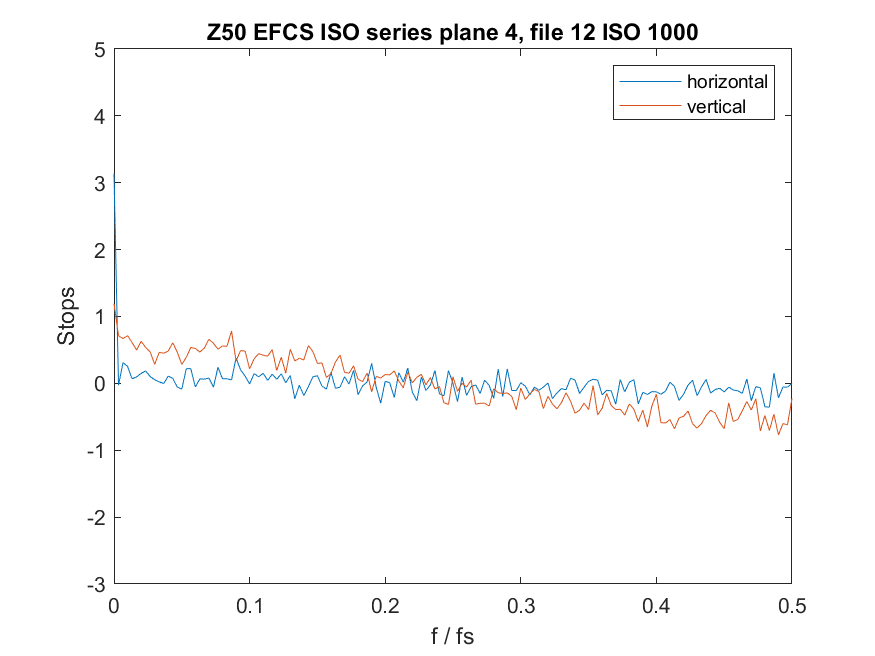
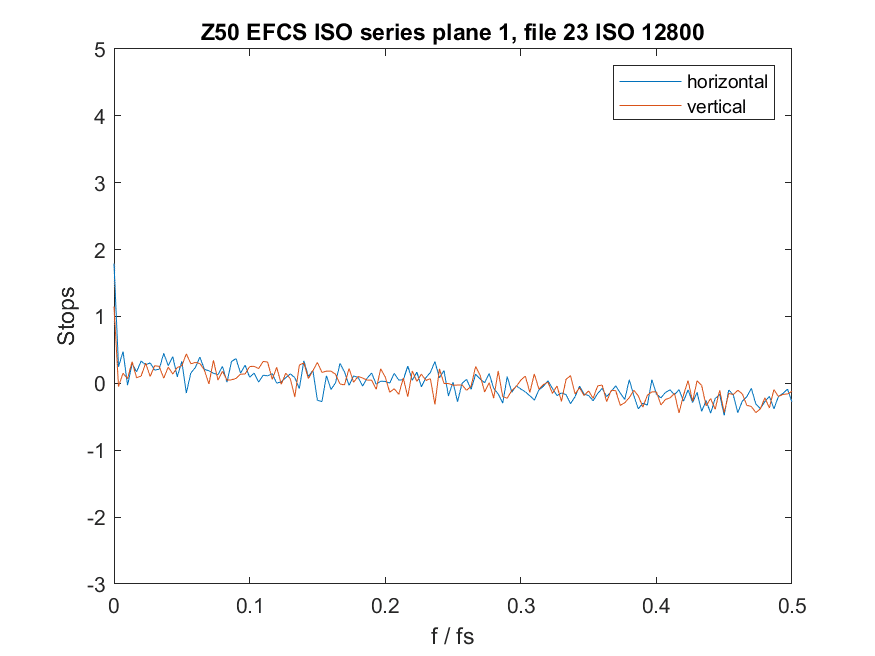
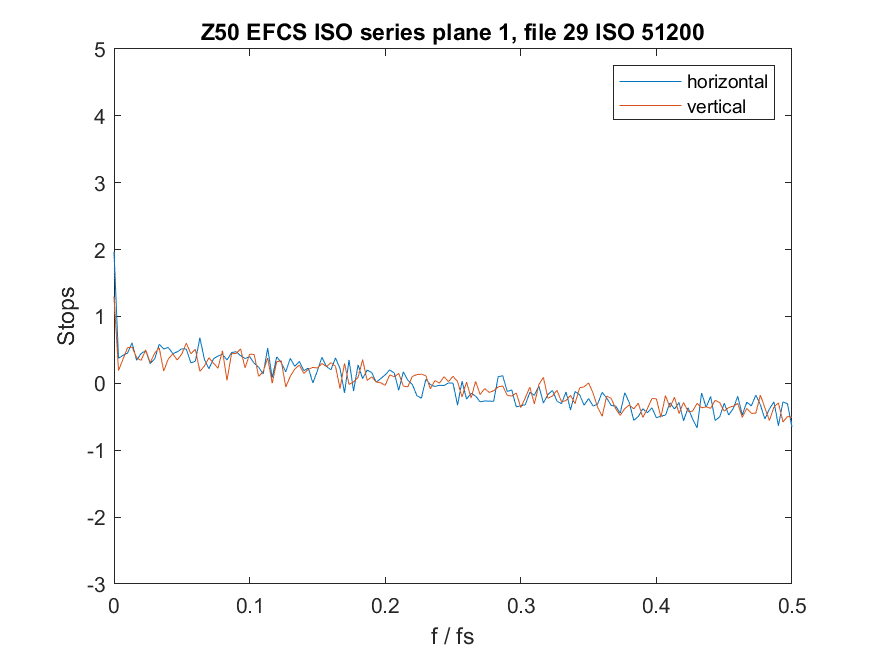
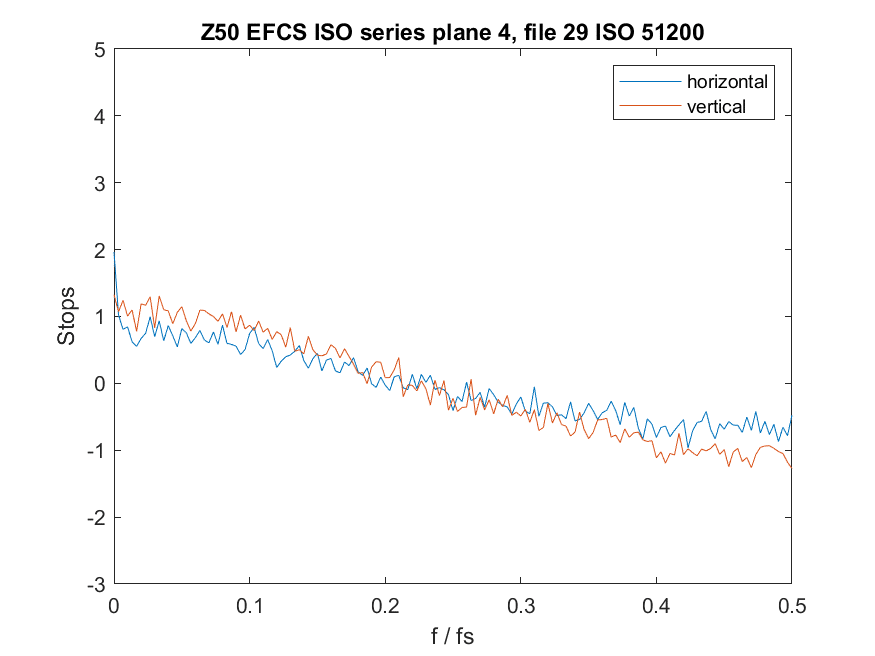
Leave a Reply